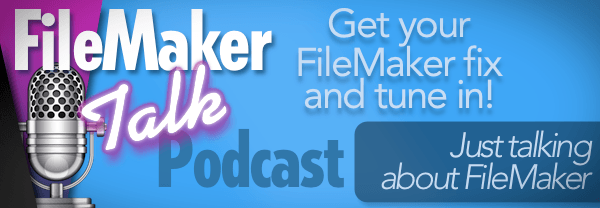Our recent videos
FileMaker developers who use editors like VS Code, IntelliJ IDEA, BBEdit, or even VIM are very familiar with the modern conveniences expected from a code editor: linters, code completion, formatting, syntax highlighting, and more. In FileMaker, however, we've been stuck in the 90s for quite a while.
One of my favorite tools is Typinator, which offers extensive text manipulation capabilities. Recently, a new tool for Mac developers was released that addresses the lack of a full-fledged editor. FMIndent, released by the well-respected Debi Fuchs from Aptworks, is a winner!
Adapting Perl code Debi created 20 years prior, we now have access to an OS-level tool that can format our code anywhere in FileMaker — or anywhere else on your computer for that matter.
With the power of Apple's Shortcuts app and the new FMIndent, you can absolutely format your code exactly as desired. If you like taking control over your code, give this video a watch. With the ability to post-process what FMIndent provides, there's little you can't do.
Special note about permissions: You may need to assign various levels of access to Shortcuts and the clipboard. As well as Allow Running Scripts within the Advanced area of Shortcut's settings.
When it comes to doing the same thing over and over again, you really can't beat a loop. It's the wet side of DRY (Don't Repeat Yourself), where the "Don't" turns into a very big "Please, yes, DO."
The trick with loops, especially when you're processing a lot of data like JSON, is that you often have to manage multiple iterators, counts, and all the little bits and pieces needed for a successful outcome.
One of the wonderful things about many other languages, like Python, PHP, JavaScript, and others, is they offer really nice structures like forEach(). Well, we can have the same thing too! Things may not be as ideal as they are in those languages, but we can definitely enjoy some added code clarity and convenience - making it that much easier to work with loopable data.
In this video, I showcase an updated version of a convenience function for working with both simple lists and JSON arrays. It’s a great way to handle intra-script parameters and makes your code much easier to read.
Breaking down complex logic into manageable chunks of code is the smartest thing you can do when it comes to conditional formatting. Especially when it needs to account for an increasingly wider number of conditions.
This week's video deals with what seems like a simple solution to solve, yet it comes with all kinds of complex little pieces to make the solution provide the end result desired.
If you enjoy the type of video which is a bit of a solution walk-thru, where I discuss how things are solved, then make sure to spend a bit of time with this technique and video.
Every solution starts out like an infant. It knows very little and works hard to manage your solution's data as it becomes a productive citizen of your digital society. As it grows, your solution will need to offer a variety of options. User A prefers things one way, while User B another.
Your job, as the developer, is to accommodate those whims and preferences, or settings as we’ll call them, in the most efficient way possible. As is somewhat typical, you may be halfway through development when you stop and ask yourself if there's a better way to manage the growing list of settings.
In this video, I showcase an effective method for managing solution settings. By combining popular FileMaker techniques, we can consolidate, present, and manage settings in a highly streamlined way. Whether your solution is decades old or a brand new build, there is always something new to learn about handling data. We will look at how to combine JSON with solution settings and how easy it can be to simplify the process.
One of the greatest joys of working in technology is that you never really have to stop learning - although you certainly can. Everything also moves so fast that it often feels like you can’t keep up. The great thing about FileMaker is that you're not stuck in the '80s or '90s when the software first started - you get to explore as widely as you like. FileMaker can literally reach into almost all aspects of technology.
You can learn about relational structure, SQL, REST, web APIs, and whatever the next challenge is to make your data work the way you want to work. In this week's video, I focus on a topic related to solution architecture. It's presented in the form of using a Gateway file. This is a term I use to simply indicate that a FileMaker file acts as a technical arbitrator - helping decide which direction to take and what can be done before entering your “true” solution.
Yes, the Gateway file is part and parcel of your overall solution, but as a component that can be easily separated, it can provide critical functionality that makes development and maintenance a bit easier. If you're currently using a single-file FileMaker solution and have reached a point where your technical debt feels overwhelming, moving to this type of file setup may offer a breath of fresh air - whether you're revamping an older solution or starting something new.
Even to this day, after providing FileMaker-related technical education for many years, I still see solutions with less-than-optimal structure and storage. When it comes to graphics, “all things add up.” The cumulative cost of data or technical debt often comes back to bite you when you’re trying to refactor an old solution to meet modern standards.
This video showcases what I know about storing and using graphics within your FileMaker layouts. If you’re unaware of how large images impact performance, you might end up needing to update them in a million different places - unless you know the trick for better storage. For example, not realizing that you’ve added a 4MB image instead of an optimized version that can be transferred as part of CSS through WebDirect can make a huge difference in performance. These are the kinds of small but crucial details that can significantly improve your solution overall.
That’s what videos like this are all about - understanding how things really work. How is the data stored? Are things being duplicated unnecessarily? If the thought of updating hundreds of graphics is something you’d rather avoid, then it’s time to take full advantage of the tools available to us. Let’s optimize our graphics knowledge.
When tackling the task of updating a UI/UX look and feel, it can quickly become overwhelming — especially if you have hundreds of layouts and countless individual styles, some in use and others deprecated.
While designing a new solution from scratch allows you to take advantage of modern best practices, many existing solutions have simply relied on the Default style and applied it across numerous layouts.
The goal of this video is to demonstrate how you can achieve an updated look without disrupting the existing one. If you recognize that style names are the key and plan for the migration, you can accomplish several objectives:
1. Eliminate the use of the Default style in your UI.
2. Remove or transition outdated styles that are no longer in use.
3. Most importantly, establish a consolidated theme where the Default style can serve as a single control point for making sweeping, solution-wide changes with minimal effort.
Taking the time to phase out the Default style and integrate an updated theme can also inspire the use of newer UX tools and techniques that have emerged in recent years.
Continuing from a previous video that introduced the Execute FileMaker Data API script step, this video explores the remaining CRUD operations added in FileMaker 21+.
With the create, update, duplicate, and delete actions, we can now leverage more stateless data operations thanks to direct write access to tables.
This video walks through the new write capabilities of the Execute FileMaker Data API script step. Along the way, we’ll also share tips and tricks for writing Custom Functions and explore how to take advantage of CRUD options using plug-ins, such as the popular MBS plug-in.
The Execute FileMaker Data API script step has been around for quite a few years. It was introduced in FileMaker 19, around 2020. If you haven't used it, you may be manually creating JSON for your records when you don’t need to — FileMaker can do this for you. I covered this script step in a video in 2021, explaining how the REST/Data API functionality translates into internal use.
While some features perform better than the Execute Data API step — ExecuteSQL() being one of them — it requires additional work to convert a SQL response into the standard JSON format.
If you're working with an external API, you’ll likely need to provide JSON. However, if you can simply remap the JSON that FileMaker generates natively, integrating with an external API may be easier than you think. This video and file demonstrate how to use the Execute Data API script step without changing context while efficiently remapping the data into your desired format.
Every development task involves both what you know and what you don’t. The key to achieving the desired outcome often lies in learning what you don’t yet understand. That’s exactly what we’ll explore in this video – how to collect data from related tables for use in various ways.
If you haven’t used the GetNthRecord() function before, this video provides a perfect example of one of its applications. When combined with the While() function, you can build virtually any data structure to help you achieve your desired solution.



